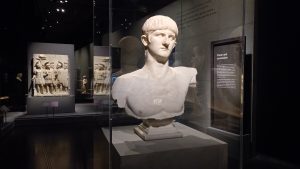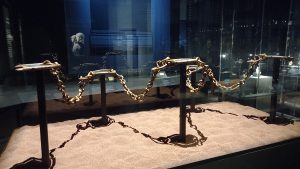
Another week, another fabulous British Museum show – they have been queueing up like buses during lockdown to arrive all at once.
There are similarities between the Nero show and the Becket show which they also asked me to review ahead of its opening.
Both deal with the rewriting of history. In Nero’s case, the argument cogently expressed by the curators goes, the history was written by his senatorial opponents, so blackened his image.
Nero did not fiddle while Rome burned – indeed helped rebuild it – and was as popular with the common people for his military and civic achievements as he was unpopular with the senators for, not to put too fine a point on it, showing off a lot. They particularly couldn’t stomach his penchant for appearing on stage, the first Emperor ever to do so, so he could appeal directly to the populace; the BM makes an analogy with Twitter. Blond, good looking and with a new hairstyle, Nero’s image swept the Empire.
That said, only so much revisionism is possible. This is after all a man who killed his mother, two wives and his brother, and did indeed send Christians to the Lions, so the whitewash only goes so far.

There’s a surprising amount about Britain, as Boudicca’s rebellion took place on Nero’s watch and he decided rather than abandoning the province to rebuild cities like London and Colchester which had been completely destroyed. Some striking artefacts are displayed, including a heavy slave chain found in Anglesey (we tend to ignore the extent of slavery in prehistoric Britain, although we almost certainly exported our own slaves during the Iron Age), which would have yoked five individuals uncomfortably together.
An intelligent decision has been made to hide most of the drab conference-centre atmosphere of the Sainsbury Wing at the British Museum by leaving it in the shadows and just spotlighting the exhibits dramatically. The way in which Nero’s statue was later reshaped after his disgrace and suicide to become Vespasian, using innovative graphics, is a model of intelligent museum curatorship – and a symbol of the historical revisionism that the show reveals.
Boris Johnson just needs to hope that Dominic Cummings isn’t writing his history, or he too will be portrayed as a Nero. But then, like his hero Churchill, he probably plans to write it himself, which is always the safest bet. Nero died before he got the chance.
